#louisiana hoodoo
Text
So you want to learn about Louisiana Voodoo…
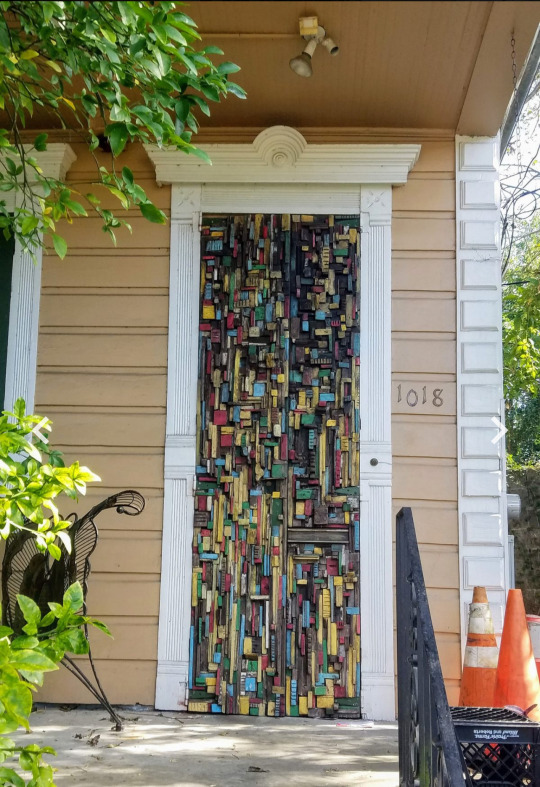
door in New Orleans by Jean-Marcel St. Jacques
For better or worse (almost always downright wrong) Louisiana Voodoo and Hoodoo are likely to come up in any depiction of the state of Louisiana. I’ve created a list of works on contemporary and historical Voodoo/Hoodoo for anyone who’d like to learn more about what this tradition is and is not (hint: it developed separately from Haitian Vodou which is its own thing) or would like to depict it in a non-stereotypical way. I’ve listed them in chronological order. Please keep a few things in mind. Almost all sources presented unfortunately have their biases. As ethnographies Hurston’s work no longer represent best practices in Anthropology and has been suspected of embellishment and sensationalism on this topic. Additionally the portrayal is of the religion as it was nearly 100 years ago- all traditions change over time. Likewise Teish is extremely valuable for providing an inside view into the practice but certain views, as on Ancient Egypt, may be offensive now. I have chosen to include the non-academic works by Alvarado and Filan for the research on historical Voodoo they did with regards to the Federal Writer’s Project that is not readily accessible, HOWEVER, this is NOT a guide to teach you to practice this closed tradition, and again some of the opinions are suspect- DO NOT use sage, which is part of Native practice and destroys local environments. I do not support every view expressed but think even when wrong these sources present something to be learned about the way we treat culture
*Start with Osbey, the shortest of the works. To compare Louisiana Voodoo with other traditions see the chapter on Haitian Vodou in Creole Religions of the Caribbean by Olmos and Paravinsi-Gebert. Additionally many songs and chants were originally in Louisiana Creole (different from the Louisiana French dialect), which is now severely endangered. You can study the language in Ti Liv Kreyol by Guillery-Chatman et. Al.
Le Petit Albert by Albertus Parvus Lucius (1706) grimoire widely circulated in France in the 18th century, brought to the colony & significantly impacted Hoodoo
Mules and Men by Zora Neale Hurston (1935)
Spirit World-Photographs & Journal: Pattern in the Expressive Folk Culture of Afro-American New Orleans by Michael P. Smith (1984)
Jambalaya: The Natural Woman's Book of Personal Charms and Practical Rituals by Luisah Teish (1985)
Eve’s Bayou (1997), film
Spiritual Merchants: Religion, Magic, and Commerce by Carolyn Morrow Long (2001)
A New Orleans Voodoo Priestess: The Legend and Reality of Marie Laveau by Carolyn Morrow Long (2006)
“Yoruba Influences on Haitian Vodou and New Orleans Voodoo” by Ina J. Fandrich (2007)
The New Orleans Voodoo Handbook by Kenaz Filan (2011)
“Why We Can’t Talk To You About Voodoo” by Brenda Marie Osbey (2011)
Mojo Workin': The Old African American Hoodoo System by Katrina Hazzard-Donald (2013)
The Tomb of Marie Laveau In St. Louis Cemetery No. 1 by Carolyn Morrow Long (2016)
Lemonade, visual album by Beyonce (2016)
How to Make Lemonade, book by Beyonce (2016)
“Work the Root: Black Feminism, Hoodoo Love Rituals, and Practices of Freedom” by Lyndsey Stewart (2017)
The Lemonade Reader edited by Kinitra D. Brooks and Kameelah L. Martin (2019)
The Magic of Marie Laveau by Denise Alvarado (2020)
In Our Mother’s Gardens (2021), documentary on Netflix, around 1 hour mark traditional offering to the ancestors by Dr. Zauditu-Selassie
“Playing the Bamboula” rhythm for honoring ancestors associated with historical Voodoo
Voodoo and Power: The Politics of Religion in New Orleans 1880-1940 by Kodi A. Roberts (2023)
The Marie Laveau Grimoire by Denise Alvarado (2024)
Voodoo: An African American Religion by Jeffrey E. Anderson (2024)
#I’ll continue to update as I find more sources#Please be respectful of other people’s religion#Louisiana Voodoo#Louisiana Hoodoo#In the case of authors behind a paywall or whom you do not wish to support I highly recommend your local library#I do not support every view but think even when wrong they present something to be learned about the way we treat culture#Voodoo#Hoodoo#conjure#rootwork#Books
39 notes
·
View notes
Text
Crab Shell Podwer🦀
Crab Shell Powder Is Used To Reverse Damaging Situations And Attacks. This is why Crabs Always Walk Backwards.
#witches#witchcraft#witch#witch community#baby witch#witches of tumblr#hoodoo#louisiana hoodoo#hoodoo witch#new orleans hoodoo#hoodoowitches#folk magic#cunning folk#cunning folk of the crooked path#american folk magick#african folk magick#american folk magic#catholic folk magic#traditional witch#traditional witchcraft
9 notes
·
View notes
Text


During the era of slavery, occultist Paschal Beverly Randolph began studying the occult and traveled and learned spiritual practices in Africa and Europe. Randolph was a mixed race free African man who wrote several books on the occult. In addition, Randolph was an abolitionist and spoke out against the practice of slavery in the South.
After the American Civil War, Randolph educated freedmen in schools for former slaves called Freedmen's Bureau Schools in New Orleans, Louisiana, where he studied Louisiana Voodoo and hoodoo in African American communities, documenting his findings in his book, Seership, The Magnetic Mirror. In 1874, Randolph organized a spiritual organization called Brotherhood of Eulis in Tennessee.
Through his travels, Randolph documented the continued African traditions in Hoodoo practiced by African Americans in the South. Randolph documented two African American men of Kongo origin that used Kongo conjure practices against each other. The two conjure men came from a slave ship that docked in Mobile Bay in 1860 or 1861.

#kongo#african american#mobile bay#randolph#paschal beverly randolph#sex magick#seership#magnetic mirror#tennessee#american civil war#louisiana voodoo#hoodoo#rootwork#conjure#ancestor veneration#witchblr#pagans of tumblr#afrakans#brownskin#africans#kemetic dreams#afrakan#african#brown skin#african culture#afrakan spirituality#africa#europe
53 notes
·
View notes
Text
Every now and then, I come across a place that makes me feel welcome and at home. This is difficult being a black woman in the south. We have to find spaces that treat us well. I had a great experience at this bookstore. I hate greedy corporations and would rather buy books locally. Red Stick Reads has a nice atmosphere, cute stickers, books by local authors, a funny owner, children's books, and he has books written by poc. If you are in Baton Rouge for whatever reason and happen to be a book nerd. Please check this place out. We need to support small businesses! ❤️
#witchblr#books#booklr#baton rouge#louisiana#books & libraries#bookblr#hoodoowitches#wicca#witchcraft#hoodoo#art
37 notes
·
View notes
Text

🖤🙏🏿🖤
#hoodoo#haitian vodou#voodoo#heritage#gullah geechee#florida#louisiana#new orleans#black tumblr#blacklove
30 notes
·
View notes
Text
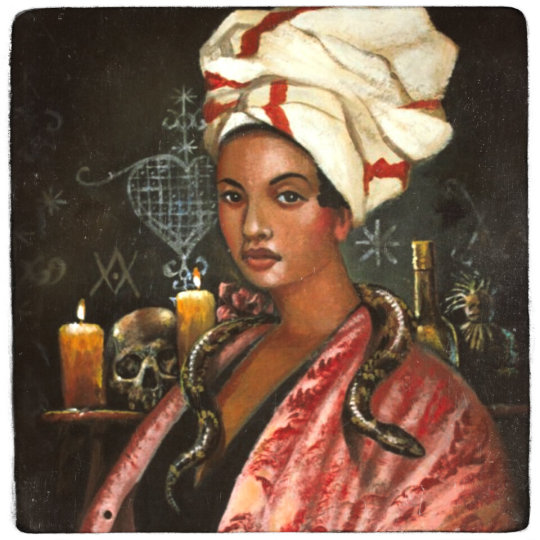
#marie laveau#southern gothic#southern gothic aesthetic#south#southern#south louisiana#louisiana#new orleans#voodoo#hoodoo#roman catholic#catholic
374 notes
·
View notes
Text
Today we venerate Ancestor & Hoodoo Saint, Charles Deslondes on the 212th anniversary of his passing. 🕊
(Updated 2024)

Deslondes was a Haitian-born brotha, believed to be from Saint Domingue, who was forced into the role of overseer on the Andry Plantation in Louisiana until he took up arms against them.
He was born on the Jacques Deslondes plantation around 1789. He was described as being as a “Creole mulatto slave by the name of Charles, “about 16 years old" & recorded to be a “field laborer.” Later, he was sold to the Andry Plantation of Col. Manuel Andre & forcibly worked as an overseer to 86 enslaved Afrikans.
Eventually, he organized enslaved Afrikans & maroons ahead of the legendary German Coast Uprising in what is now St. John the Baptist Parish, part of the German Coast off the Mississippi River.
On Jan 8th, 1811 Deslondes & 14 others attacked their slave "master" Andry Sr. (of the Andry Plantation in St. John's Parish) & killed his son. While Andry Sr. escaped, Deslondes & allies swept the plantation & fled into the Louisiana Territory. By January 10th their numbers swelled to 400-500. They successfully killed yet another slave "master", sending Whites from the area fleeing into New Orleans.
The governor of the Louisiana Territory assembled a militia of volunteers + 700 U.S. Army Troops & Navy Sailors to end to the rebellion after receiving intel on Deslondes' next move by the foolish few who betrayed Deslondes & Co in exchange for their own freedom.

"His hands were chopped off upon his capture; he was shot in both thighs and bullets were riddled throughout his body. Before he passed, his body was shoved into a bundle of straw and he was roasted alive as a warning to other rebels and "free" folks. [Later, he was decapitated & joined the heads of other rebels that were put upon spikes posted along major roadways throughout New Orleans.] - as described by the U.S. Navy.
We remember Deslondes for his unprecedented leadership & bravery that spearheaded the first & bloodiest rebellion on U.S. soil of his time. We remember him for his cleverness, courage, & heroism that inspired so many others to liberate themselves rather than beg for something that cannot be given by man. We remember him for his immeasurable suffering & for giving the ultimate sacrifice for the love of us.
We pour libations & give him his 💐 today. Offering suggestions: light a white candle, libations of water, & Haitian cuisine.
‼️Note: offering suggestions are just that & strictly for veneration purposes only. Never attempt to conjure up any spirit or entity without proper divination/Mediumship counsel.‼️
#hoodoo#hoodoos#atrs#atr#Hoodoo Saints#Hoodoo History#charles deslondes#the german coast uprising#german coast uprising#andry's rebellion#ayiti#creole#Louisiana#black history#thehoodoocalendar
137 notes
·
View notes
Text
JuJus.
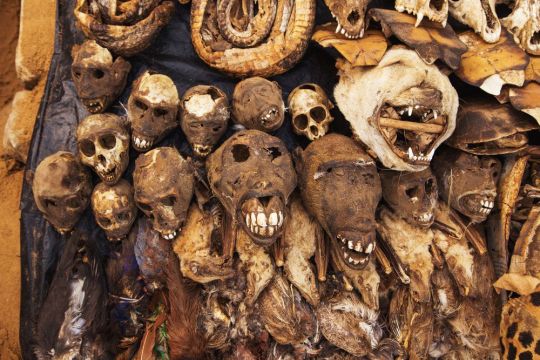
Juju is not just a objects but a practice that was and still is performed in West African countries. These objects or not good nor bad, but it can be used for both because they been infused with magical power.
The monkey’s head (above) are probably the most common juju seen in West Africa. In the south in New Orleans they're used quite often in voodoo as a object to protects a person or place from negativity and evil. (Important) There made from something which was once alive. Such as a tree that was used to make let's say mask, totem pole, doll, or a gator head, etc. Jujus can be hung above the door of a home or business, or placed on an altar or anywhere in the home that needs protection.
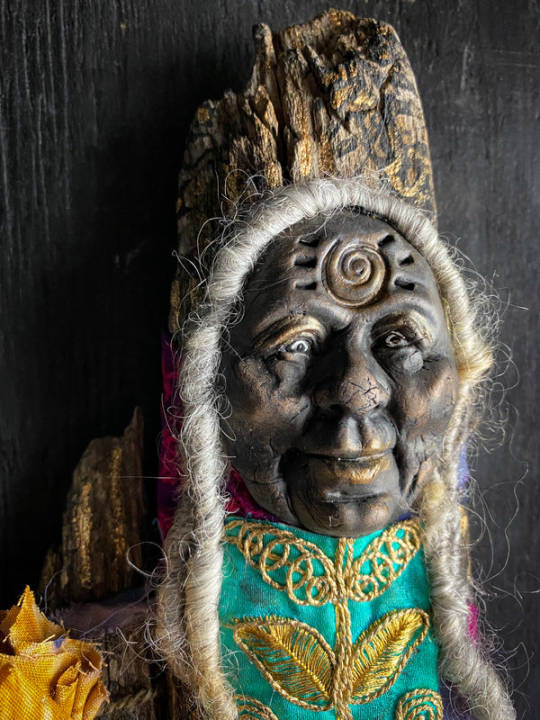
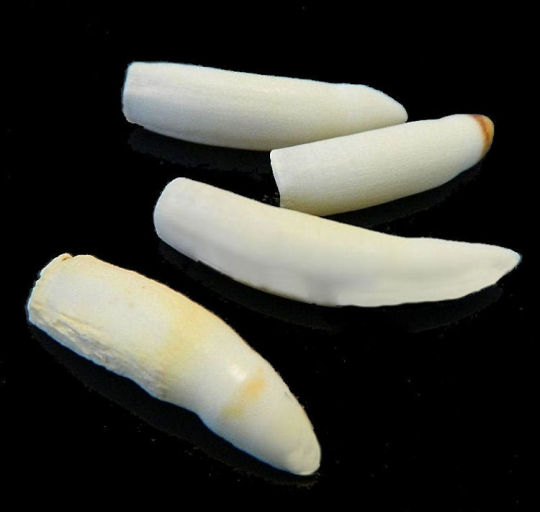
(Left) a juju doll not my photo. (Right are my alligator teeth juju
Juju operates by using physical contact. The belief is that two entities that have been in close contact have similar properties even after being separated. Which is why a person’s hair, fingernails, a piece of clothing, a shoe, a sock, or a piece of jewel all these things that were worn by a person are perfect candidates for a juju because it contains the essence of that's person's spirit.
Specialists with strong knowledge and experience would typically create a juju. The specialist may be anyone with spiritual knowledge and experience. Because juju's is commonly used as treatment for physical and spiritual ailments from healing insect and animal bites to stoping curses.
#Juju's#Juju charms#Charm#spiritual#like and/or reblog!#rootwork#conjuring#southern hoodoo#louisiana voodoo#West African charm#African juju#google search#follow my blog#Magical charms#Amulets
19 notes
·
View notes
Text

🌟 Delving into the mystique of Voodoo and Hoodoo! 🌟
Ever wondered about the distinction between Voodoo and Hoodoo? Let's unravel the mysteries! 💫
🔮 Voodoo: Rooted in West African spiritual traditions, Voodoo is a religion with deep spiritual and cultural significance. It encompasses a belief in a supreme creator, spirits, and ancestors. Rituals often involve ceremonies, dances, and the honoring of spirits through offerings.
🕯️ Hoodoo: Originating in the Southern United States, Hoodoo is a folk magic practice that blends African, European, and Indigenous American traditions. It focuses on herbalism, potions, spells, and charms to manifest desired outcomes. Hoodoo practitioners often work with elements of nature and incorporate Christian symbolism.
While both Voodoo and Hoodoo share roots in African spirituality, they manifest in distinct ways, reflecting the diverse cultural landscapes in which they developed. Embrace the richness of these traditions and explore their profound depth! 🔍✨
4 notes
·
View notes
Text
'In Our Mothers' Gardens'
#In Our Mothers' Gardens#Black women#Koko Zauditu-Selassie#Louisiana#Louisiana culture#Black American culture#Louisiana Creole#Henriette DeLille#Marie Laveau#Hoodoo#Voodoo#Vodou#New Orleans
59 notes
·
View notes
Text

Baron Samedi
2 notes
·
View notes
Text
I was watching In Our Mother’s Garden (2021) on Netflix last night and was surprised to see Dr. Zauditu-Selassie cook for and feed the ancestors at around the 1 hour mark in what fits Dr. Brenda Marie Osbey’s description of an authentic voodoo tradition. Dr. Zauditu-Selassie explains her family of creole descent was matrilineal and “believed in Hoodoo,” though she is now a priest of Obatala in the Lucumi tradition. I understand many of the African diasporic religions share commonalities, though distinct, such as feeding the ancestors, but this is probably the closest to an authentic and respectful depiction that exists out there.
I’ve linked a list of additional resources on Lousiana Voodoo and Hoodoo here.
13 notes
·
View notes
Text
Theory without practice is dead and fruitless, and Practice without theory is impossible and harmful.
#witches#witchcraft#witch#baby witch#witch community#witches of tumblr#pagan witch#wicca#wiccapedia#wiccan#louisiana hoodoo#hoodoo ancestors#hoodoo#hoodoo witch#new orleans hoodoo#hoodoowitches#hoodoo and folk magick#folk witchcraft#witch folk#folklore#folk witch#cunning folk#catholic folk magic#cunning folk of the crooked path#catholic witch#catholic witchcraft#witchy tips#witchcraft 101:
7 notes
·
View notes
Text
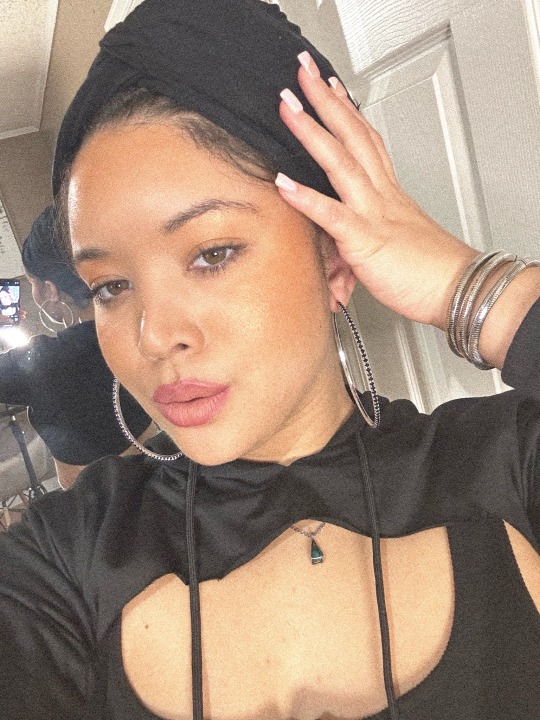
Ever wonder why many healers are beautiful…?
its often glamour magic and attraction that pulls in those who need the healing…. Not the healing itself….
🪞Check out my link in bio
🪞Follow this blog & other platforms
🪞Engage : Like , Share , Comment
My name is Mesha. Im a divine mirror. I am a practicing hoodoo spiritualist born and raised in Louisiana with Christian roots as my spiritual foundation. My spiritual journey up to this point has mostly been about reconnecting with my body, emotions and intuition, uncovering lost parts of my ancestry and integrating timeless wisdom into modern life. God has sent me to be a messenger and a mirror for others, but also a teacher of love. Without interacting with me you can engage with YEARS of free informative and therapeutic content on my platforms to help you unpack and reflect in your journey. However, whenever you are ready to tap into The Magik Mirror… reach out, book your first session and let’s unlock an entire new level of your journey together . . . 💕
#spirituality#divination#spiritual awakening#spiritualgrowth#healingjourney#mirror#psychic readers#louisiana#hoodoos#woman#intuition#therapy#love
0 notes
Text
Happy HooDoo Heritage Month 🖤
#hoodoo#voudou#haitian vodou#vodun#voodoo#blacklove#florida#louisiana#new orleans#black tumblr#giveusfree
2 notes
·
View notes
Photo
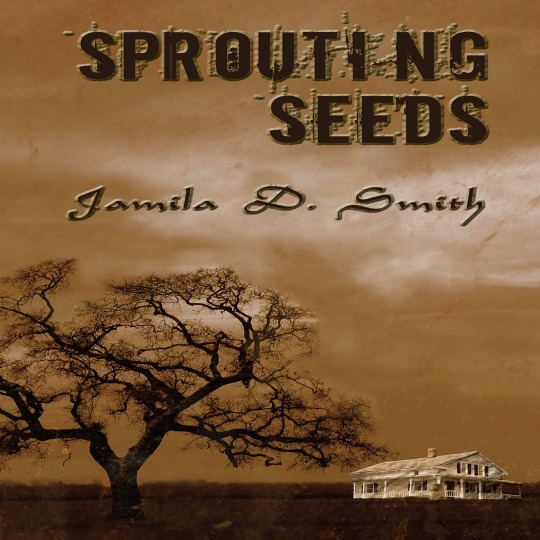
Check out Cora’s story in Sprouting Seeds! Copies are selling FAST!
#artists on tumblr#education#teen#african american#voodoo#vudu#hoodoo#louisiana#new orleans#africa#creole#magic#black#black and white#race#racism#segregation#rural#swamp#south#atlanta#georgia#atl#family#southern#church#religion#chicken#urban#jamila
0 notes